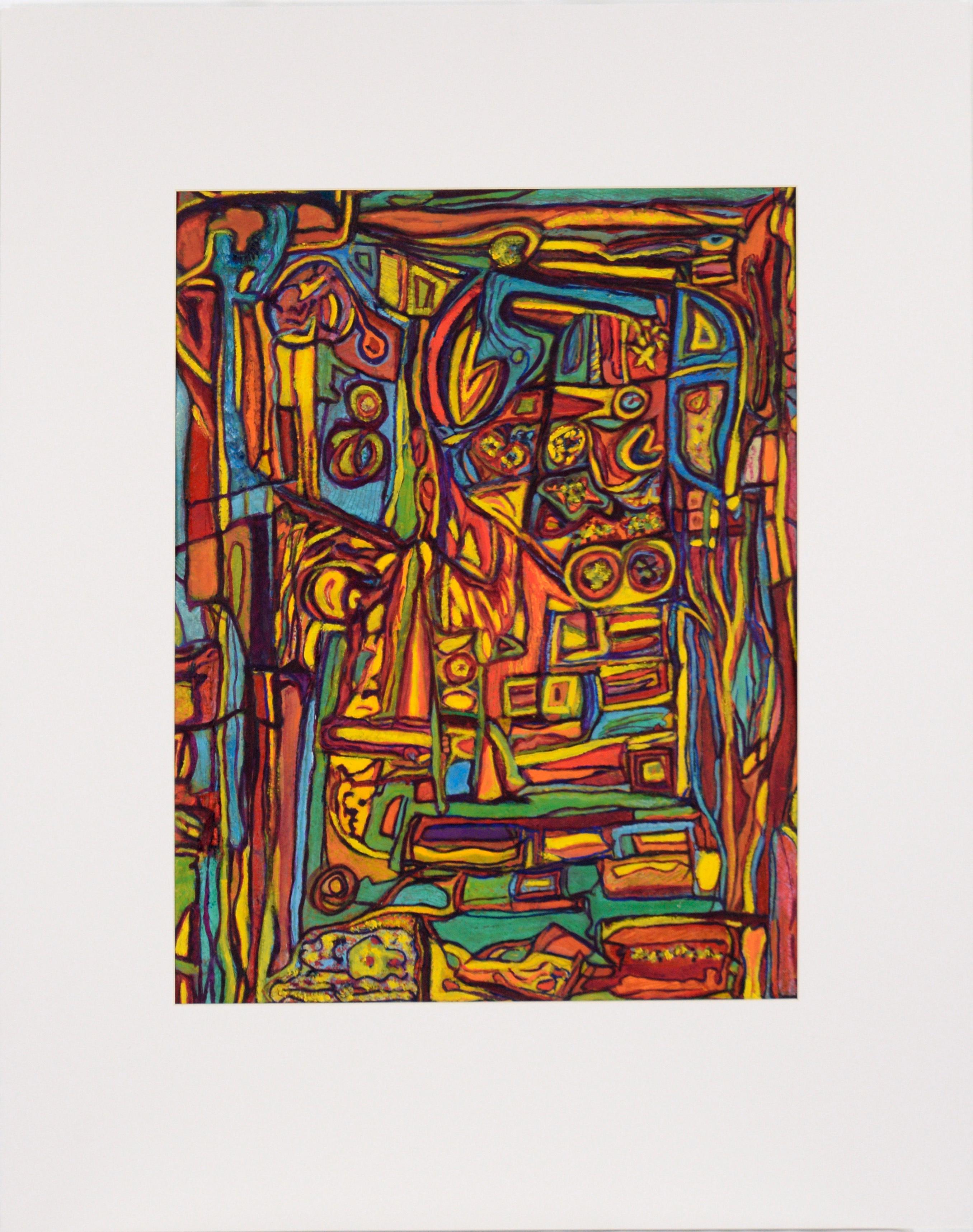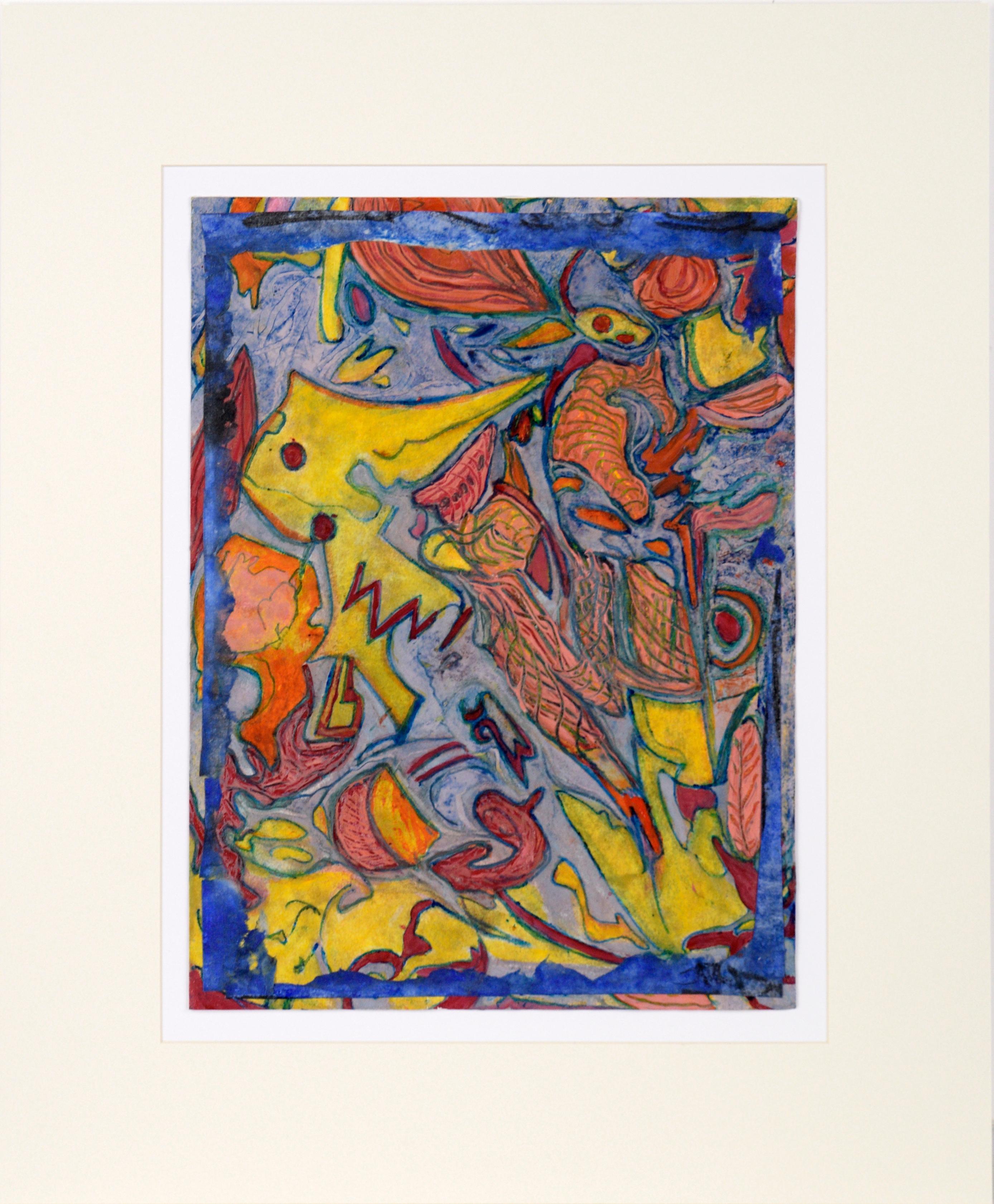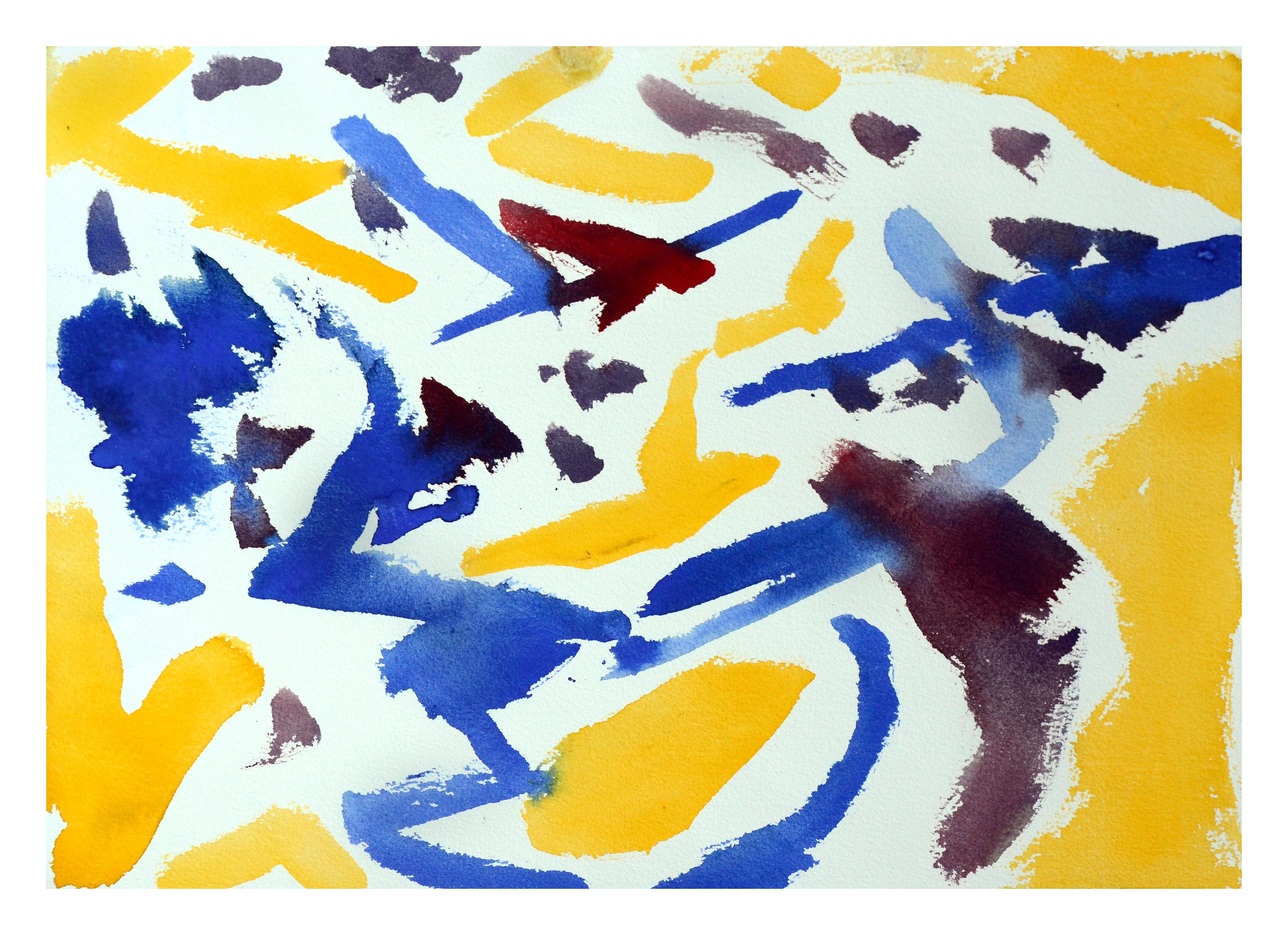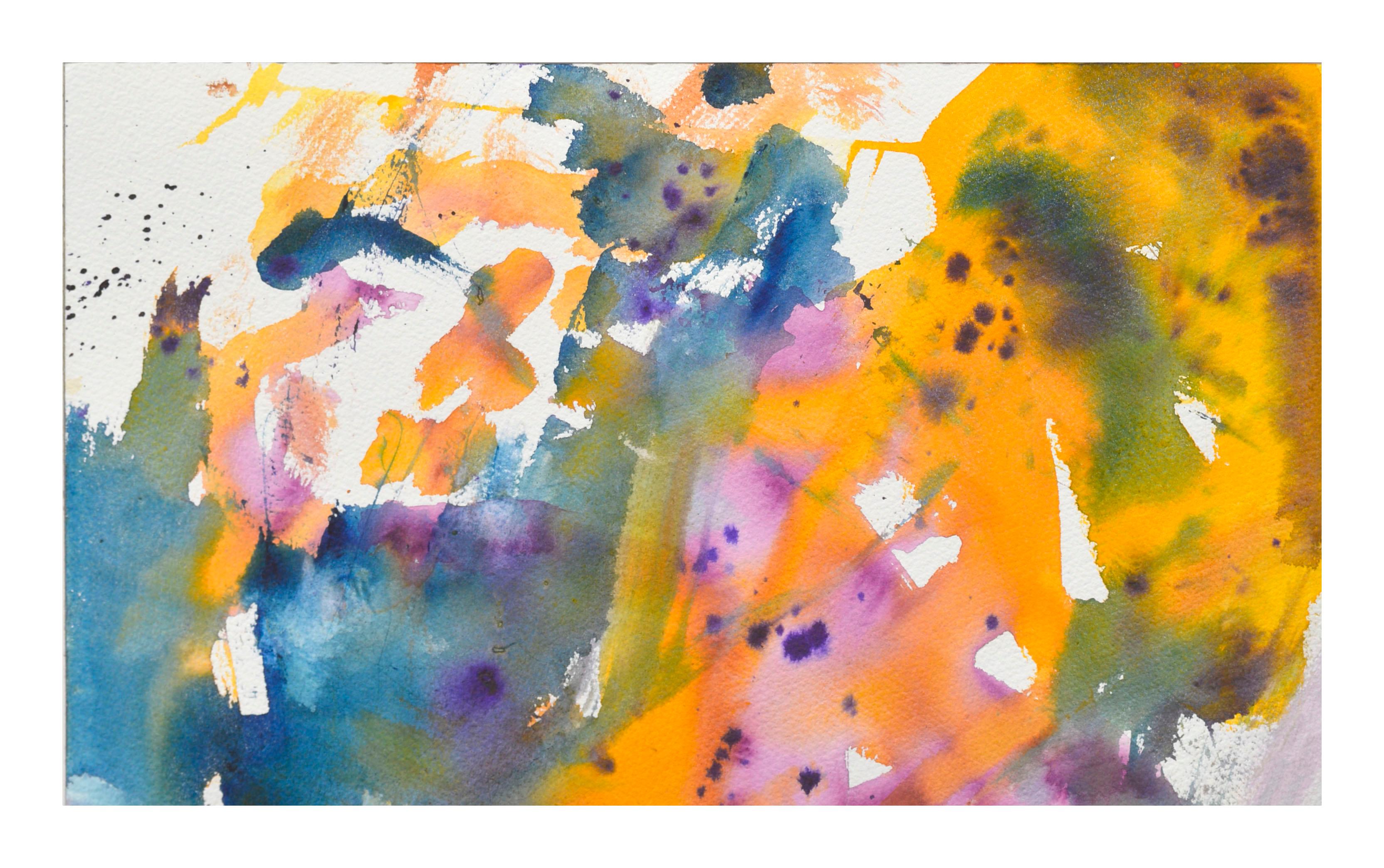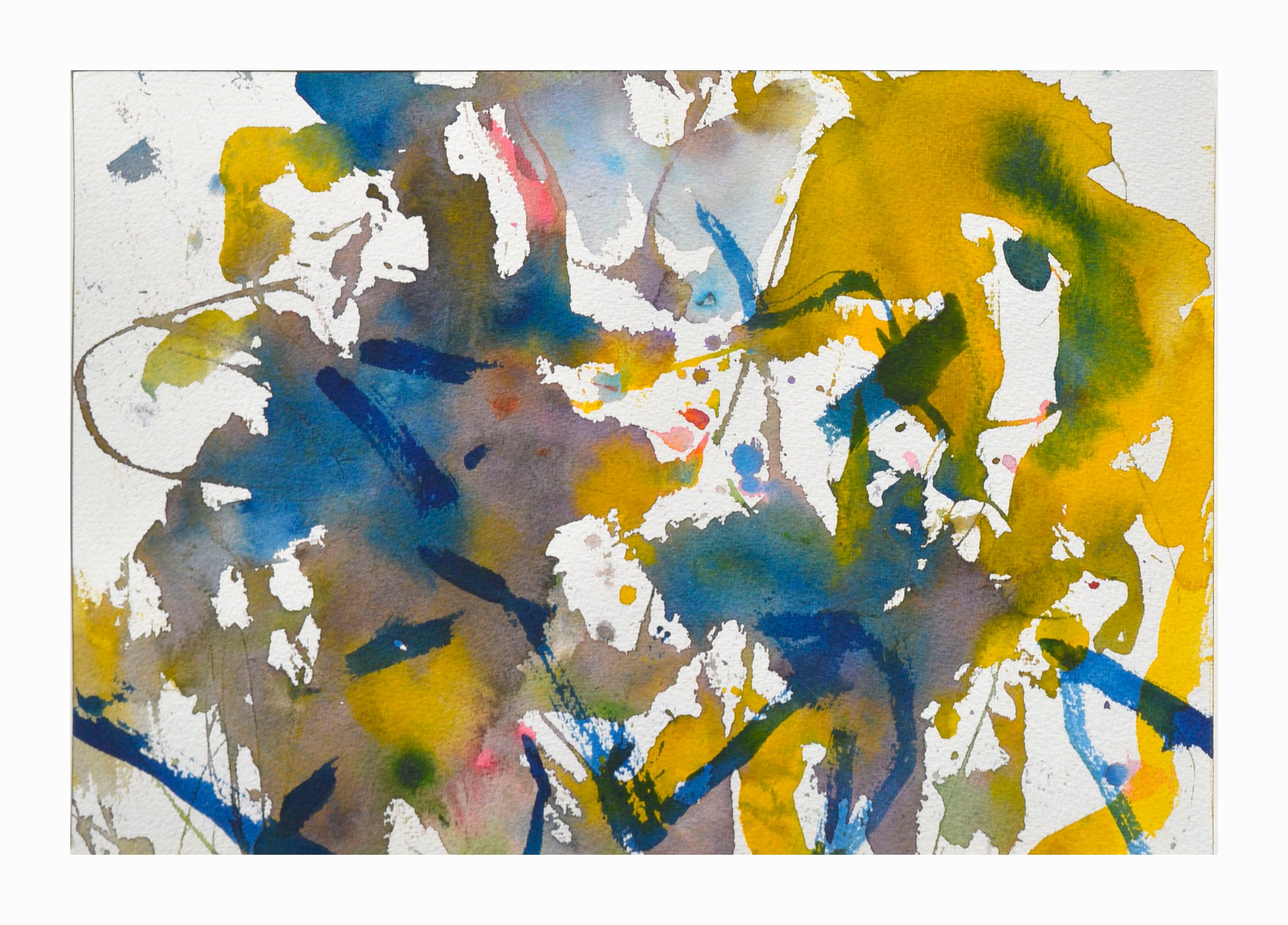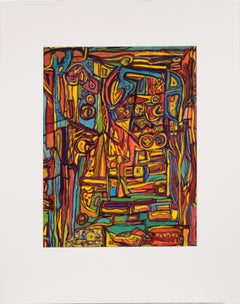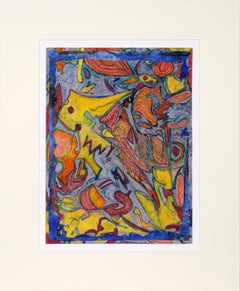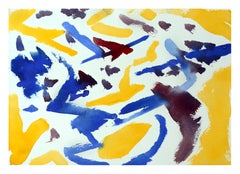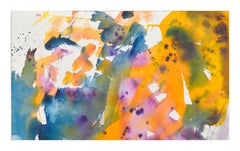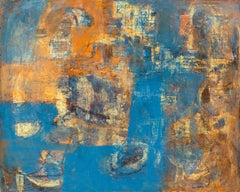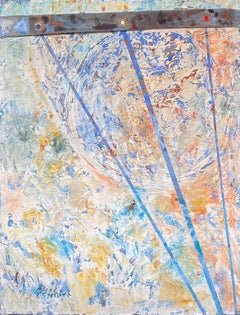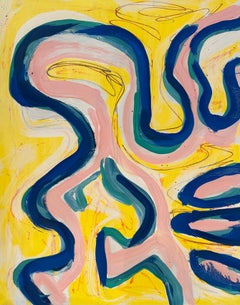Items Similar to Psychedelic Abstract in Yellow, Blue, and Orange - Oil on Paper
Want more images or videos?
Request additional images or videos from the seller
1 of 13
Jennie RaftonPsychedelic Abstract in Yellow, Blue, and Orange - Oil on Paperlate 20th Century
late 20th Century
$580
$72520% Off
£438.97
£548.7120% Off
€504.03
€630.0320% Off
CA$826.26
CA$1,032.8220% Off
A$896.10
A$1,120.1220% Off
CHF 470.66
CHF 588.3320% Off
MX$10,884.67
MX$13,605.8420% Off
NOK 5,889.61
NOK 7,362.0220% Off
SEK 5,545.40
SEK 6,931.7520% Off
DKK 3,762.90
DKK 4,703.6220% Off
About the Item
Psychedelic Abstract in Yellow, Blue, and Orange - Oil on Paper
Bright and colorful abstract by Jennie T. Rafton (American, b. 1925). Pattens and shapes spill across the paper, full of complexity and detail. The majority of the shapes are elongated, creating a sense of movement across the piece.
Unsigned, but was acquired with a collection of the artist's work.
Presented in a new white mat.
Paper size: 20"H x 15"W
Jennie T. Rafton (American, b. 1925) is a well-known California artist, primarily for her abstract compositions. She and her husband Michael were ardent supporters of the arts, especially the Oakland Symphony Guild.
Exh: 1982 - Magnin Gallery (solo), Walnut Creek, CA
- Creator:Jennie Rafton (1925, American)
- Creation Year:late 20th Century
- Dimensions:Height: 28 in (71.12 cm)Width: 22 in (55.88 cm)Depth: 0.25 in (6.35 mm)
- Medium:
- Movement & Style:
- Period:
- Condition:Overall good condition.
- Gallery Location:Soquel, CA
- Reference Number:Seller: 0242_DBH1stDibs: LU54211663562
About the Seller
5.0
Platinum Seller
Premium sellers with a 4.7+ rating and 24-hour response times
Established in 1986
1stDibs seller since 2014
3,010 sales on 1stDibs
Typical response time: <1 hour
- ShippingRetrieving quote...Shipping from: Soquel, CA
- Return Policy
Authenticity Guarantee
In the unlikely event there’s an issue with an item’s authenticity, contact us within 1 year for a full refund. DetailsMoney-Back Guarantee
If your item is not as described, is damaged in transit, or does not arrive, contact us within 7 days for a full refund. Details24-Hour Cancellation
You have a 24-hour grace period in which to reconsider your purchase, with no questions asked.Vetted Professional Sellers
Our world-class sellers must adhere to strict standards for service and quality, maintaining the integrity of our listings.Price-Match Guarantee
If you find that a seller listed the same item for a lower price elsewhere, we’ll match it.Trusted Global Delivery
Our best-in-class carrier network provides specialized shipping options worldwide, including custom delivery.More From This Seller
View AllPsychedelic Abstract in Yellow, Teal, and Orange - Oil on Paper
Located in Soquel, CA
Psychedelic Abstract in Yellow, Teal, and Orange - Oil on Paper
Bright and colorful abstract by Jennie T. Rafton (American, b. 1925). Pattens and shapes spill across the paper, full of complexity and detail. The majority of the shapes are elongated, creating a sense of movement across the piece.
Unsigned, but was acquired with a collection of the artist's work.
Presented in a new light grey mat.
Paper size: 20"H x 15"W
Jennie T. Rafton (American, b. 1925) is a well-known California artist, primarily for her abstract compositions. She and her husband Michael were ardent supporters of the arts, especially the Oakland Symphony Guild.
Exh: 1982 - Magnin Gallery (solo), Walnut Creek...
Category
Late 20th Century Abstract Expressionist Abstract Paintings
Materials
Oil
Carnival Abstract in Blue, Orange, and Yellow - Oil and Collage on Paper
Located in Soquel, CA
Carnival Abstract in Blue, Orange, and Yellow - Oil and Collage on Paper
Bright and colorful abstract by Jennie T. Rafton (American, b. 1925). Shapes are scattered across the page, ...
Category
1990s Abstract Expressionist Abstract Paintings
Materials
Paper, Oil, Tape
Yellow, Blue & Red Abstract
By Les Anderson
Located in Soquel, CA
A bold abstract watercolor with yellow and blue, contrasted with red accents by Les (Leslie Luverne) Anderson (American, 1928-2009). Signed "Les Anderson" on verso. From the estate o...
Category
1980s Abstract Expressionist Abstract Drawings and Watercolors
Materials
Paper, Watercolor
$300 Sale Price
20% Off
Blue & Yellow Abstract Watercolor
By Les Anderson
Located in Soquel, CA
Blue & yellow abstract watercolor by Les (Leslie Luverne) Anderson (American, 1928-2009). From the estate of Les Anderson in Monterey, California. Signed on verso and unframed. Image...
Category
1980s Abstract Expressionist Abstract Drawings and Watercolors
Materials
Paper, Watercolor
$223 Sale Price
20% Off
Blue & Yellow Abstract Watercolor
By Les Anderson
Located in Soquel, CA
Blue & yellow abstract watercolor by Les (Leslie Luverne) Anderson (American, 1928-2009). From the estate of Les Anderson in Monterey, California. Signed on verso and unframed. Image...
Category
1980s Abstract Expressionist Abstract Drawings and Watercolors
Materials
Paper, Watercolor
$223 Sale Price
20% Off
Psychedelic Abstract Interior in Oil on Paper
Located in Soquel, CA
Psychedelic Abstract Interior in Oil on Paper
Moody abstract by Jennie T. Rafton (American, b. 1925). There is a figure in the upper left corner of this piece, looking out over the scene. There appear to be architectural elements such as windows, doors, and stairs, but the composition is highly abstracted, bordering on psychedelic. Of particular note are the symbols inscribed into the yellow shape in the lower left corner.
Inscribed in the lower right corner and acquired with a collection of the artist's work.
Presented in a new white mat.
Mat size: 20"H x 16"W
Jennie T. Rafton (American, b. 1925) is a well-known California artist, primarily for her abstract compositions. She and her husband Michael were ardent supporters of the arts, especially the Oakland Symphony Guild.
Exh: 1982 - Magnin Gallery (solo), Walnut Creek...
Category
Late 20th Century Abstract Expressionist Abstract Paintings
Materials
Oil, Paper
$520 Sale Price
20% Off
You May Also Like
Colorful Yellow Abstract Expressionist Acrylic Painting on Paper by Robert Kautz
By Robert Kautz
Located in Long Island City, NY
Artist: Robert Kautz, Austrian
Title: untitled
Year: 2004
Medium: Acrylic on paper, signed and dated
Size: 24 x 18 inches
Frame: 29 x 23 inches
Category
Early 2000s Abstract Expressionist Abstract Paintings
Materials
Acrylic
Blue, Orange, and Yellow Abstract
By Tom Reno
Located in Austin, TX
By Tom Reno
48" x 60"
Acrylic on Canvas
Tom Reno is an abstract artist originally from Southern California who now resides in New Mexico. He is the paragon of a free-spirited artis...
Category
2010s Abstract Expressionist Abstract Paintings
Materials
Canvas, Acrylic
Blue Yellow and Orange Abstract Diagonal Lines and Shapes French Painting
Located in Cirencester, Gloucestershire
Abstract Expressionist Composition
signed by Gilbert Pelissier (French born 1924)
oil painting on canvas with a rope material attached, unframed
dated 88'
canvas size: 46 x 35 inche...
Category
Late 20th Century Abstract Expressionist Abstract Paintings
Materials
Canvas, Oil
$1,319 Sale Price
20% Off
Mixed Media Tricolor Abstract Bright Painting on Paper
By Renelio Marin
Located in New York, NY
Renelio Marin is a visual artist with a diverse range of influences and styles. Born in Cuba, he received his graduate degree from the San Alejandro School of Fine Arts in Havana in ...
Category
2010s Abstract Geometric Mixed Media
Materials
Oil Pastel, Ballpoint Pen, Color Pencil
French 20th Century Vibrant Abstract Swirls of Orange, Yellow Green and Blue
Located in Cirencester, Gloucestershire
Abstract Expressionist Composition
by Gilbert Pelissier (French born 1924)
signed oil painting on canvas, unframed
dated 93
canvas size: 22 x 18 inches
condition: overall very good, ...
Category
Late 20th Century Abstract Expressionist Abstract Paintings
Materials
Canvas, Oil
Abstract 'Cloudberry' Monotype, Yellow Blue Red Ink on Paper, by Casey Haugh
By Casey Haugh
Located in New York, NY
Cloudberry by Casey Haugh
"So many of us all are constantly living in the past or busy planning the future, and that’s okay, but allow yourself to gaze upon this work and maybe reco...
Category
21st Century and Contemporary Abstract Abstract Paintings
Materials
Canvas, Oil Crayon, Acrylic
More Ways To Browse
Retro Psychedelic Art
Psychedelic Painting
Cream And Brown Abstract Art
Drip Art
Modern Painting 40 X 60
Triptych Oil
Geometric Mid Century Paintings
Argentina Artists
El Paso
Large Green Painting
Interactive Art
Acrylic Layered Paintings
Red And Orange Painting
San Miguel De Allende
Contour Art
Tufts University
Blue Abstract Flowers
40 X 40 Painting
